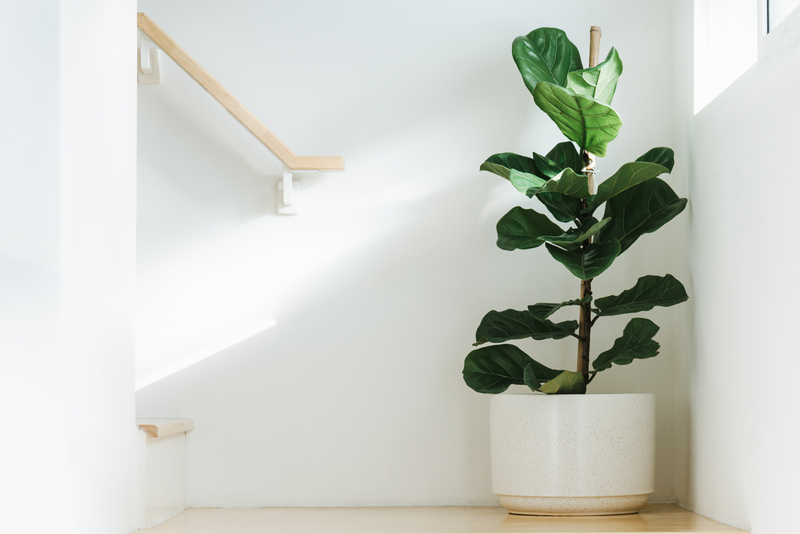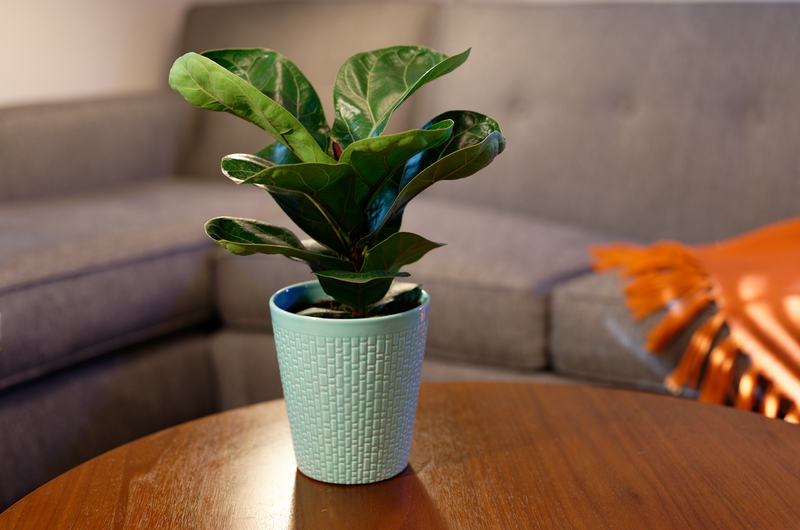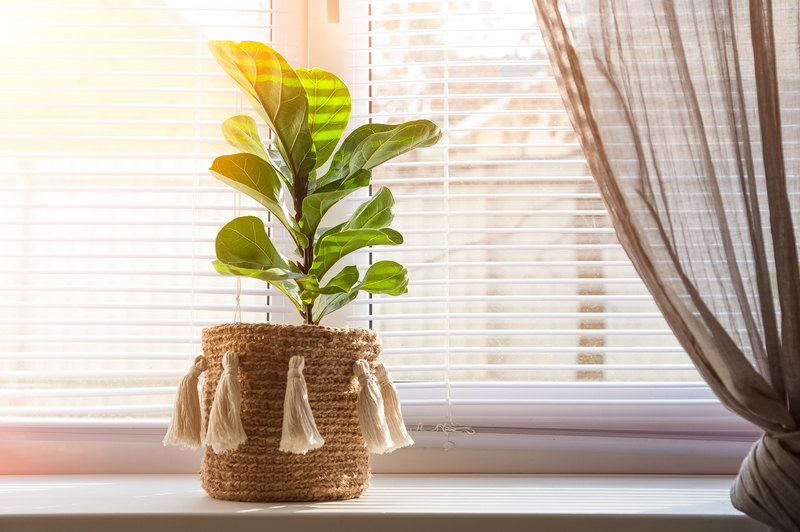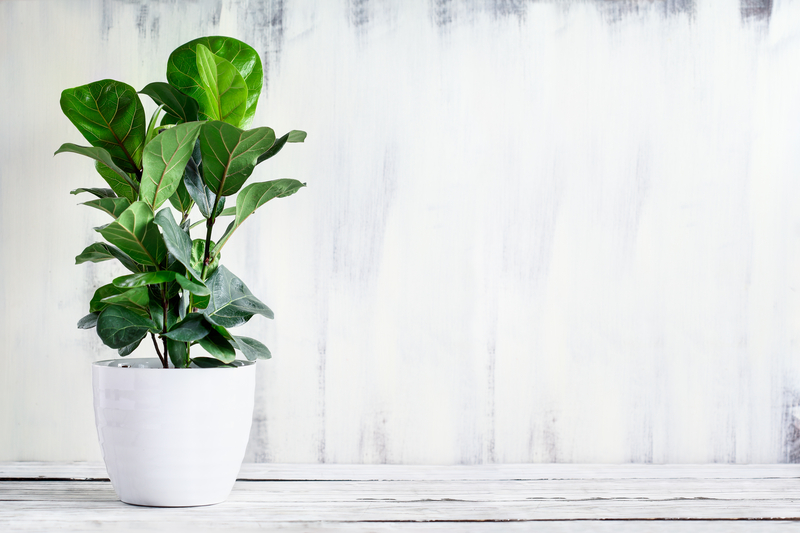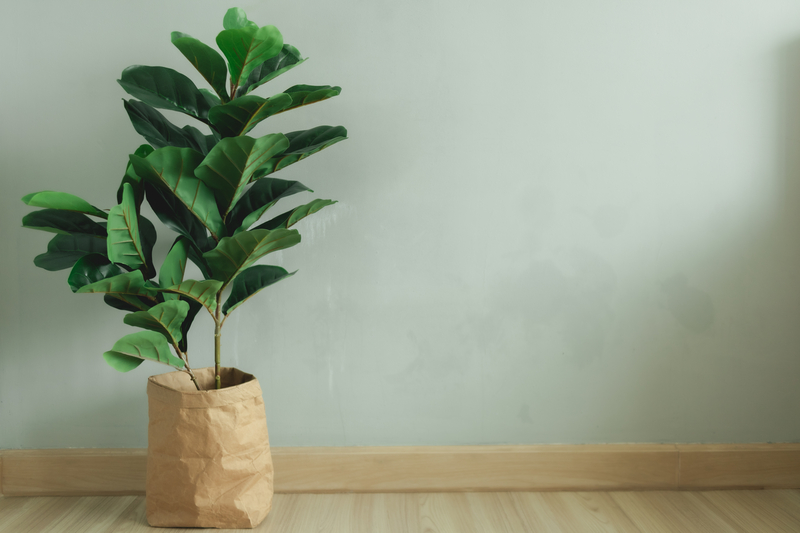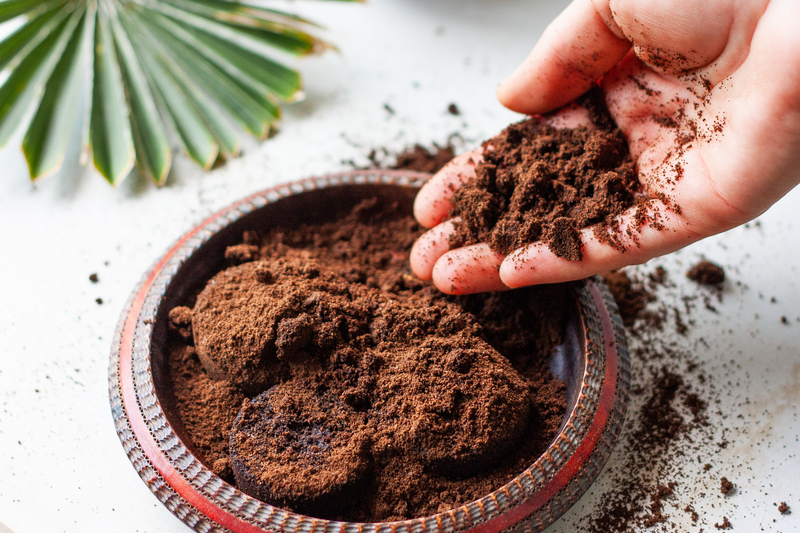The Fiddle Leaf Fig tree is a charming home centerpiece for any plant parent. Native to the rainforests of western and central Africa, Fiddle-Leaf Fig trees begin their lives growing from the branches of other trees. They send roots down to the ground as they grow, crowding or even possibly strangling their host. Here are some care tips to keep this plant alive and healthy for a long time!
Scientific Name
The scientific name of a fiddle leaf fig tree is Ficus Lyrata.
Other Names
- Banjo Fig
- Fiddle Leaved Fig Tree
- Lyre Leaf Fig Tree
Different Types
Several fig varieties fall within four categories: Caprifigs, Smyrna, San Pedro, and Common Figs. When it comes to pollination, the Caprifigs will always hold the male flowers needed by the female flowers of both the Smyrna and San Pedro varieties. In most cases, common figs are the go-to variety for in-home care.
What Soil Works Best for Fiddle Leaf Fig Tree?
Fig Plants need well-draining soil that is allowed time to dry out between watering to thrive. With a pH between 5.5-7.0, it is best to keep it neutral to slightly acidic.
How Much Sun Does a Ficus Lyrata Need?
Proper placement for your plant means finding a southern or western-facing window that can provide enough light – over 6 hours daily. In many conditions, this plant will do fine with direct sunlight.
However, if it receives too much direct light, it can scorch the leaves. If this happens, provide a sheer curtain to create indirect light to reduce how intense the light is on the plant.
What Temperature Works Best for Fiddle Leaf Figs?
A fiddle leaf fig tree needs a considerable amount of warmth to thrive. Keeping this plant in the 60-75 degree Fahrenheit range works best. Since this plant prefers tropical conditions, make sure to keep it away from dry and drafty areas in your home.
One indicator of a temperature problem is with brown spots developing on the plant’s leaves. If the plant is in a room below 50 degrees Fahrenheit, you may start seeing brown spots forming on the leaves.
Do Fiddle Leaf Figs Enjoy Humidity?
In addition to warmer temperatures, this houseplant needs considerable humidity. Most homes stay around 40%, and this should be enough. But if it’s not, mist or use a humidifier around the plant regularly to provide more moisture to the air. Also, you can add this plant to a room with a shower since it should be the most humid part of your home.
How Often Should You Water a Fig Plant?
This plant is custom to a water cycle of consistent moisture with periods to dry. Like many other tropical plants, it is best to make sure the top 2 inches of soil dry out before watering it – you can use your finger or a moisture meter to test this. When you water your plant, use room temperature water and use slow circular motions around the base of the stem.
The leaves are good indicators of how well the plant is watered. In most cases, the best watering schedule will be once every 7-10 days. When slightly underwatered, the plant’s leaves, which are typically rigid and upright, will become floppy.
What Size Do Fiddle Leaf Figs Grow to Typically?
Fiddle Leaf Fig Trees are often known for the size of their leaves. Presenting with large, stunning, and green leaves, it can make quite a statement.
In the cases of outdoor care, this plant does become a tree, reaching up to 50 feet tall. However, if you keep it indoors as many people do, it will only grow to about 6-10 feet tall.
Most Common Bugs
Fig Plants are susceptible to gnats, mealybugs, and spider mites. To combat bug issues, you should regularly clean them to remove residue, dust, and pests.
Most Common Diseases
In cases of overwatering, it is possible to cause root rot. To help the plant heal, you first have to remove the damaged leaves with sharp sheers. After that, lay the plant on its side and remove rotted portions of the root system – noted by the brown and soft texture.
Replant your Fig Tree in a new pot and potting mix once you do this and clear away as much soil as possible. Make sure to follow the watering process more carefully. In all, the rehabilitation may take 18 months.
Can you Propagate a Fiddle Leaf Fig?
You can propagate a fiddle leaf fig in a glass jar or container. Cut 2-3 leaves off the plant and place them in the pot. Place the pot in an area that receives a good amount of light and give it a month or two before repotting the plant.
Can you Repot a Fiddle Leaf Fig Tree?
Fig Trees need repotting every 18-24 months or when the plant grows too large for its current home. When this happens, choose a pot 2-4 inches larger in diameter to allow for growth. As it matures, pruning will be essential.
Fig Trees need pruning to remove dead leaves or to encourage new growth. When you do this, make sure you don’t remove more than 5-10 leaves, as this may put your plant into shock. To trim, cut the stem of the leaf at an angle 0.5″ away from the trunk.
The best time of year to prune your plant will be during the growing season to give it plenty of time and energy to grow.
Why is My Fig Dropping Leaves?
One of the major problems new plant owners notice when buying a Fig Plant is the plant begins dropping leaves early on. Often, the reason for this is that Fig Trees are sensitive to transportation and may go into shock as they are brought into their home. This shock may cause the plant to shed leaves during the first 1-2 months of the care process.
Don’t be alarmed because it should grow new leaves as long as you take proper care of it.
Are Coffee Grounds Good for Fig Plants?
Fig Trees, like most plants, thrive on three essential nutrients: nitrogen, phosphorus, and magnesium. And this is why so many people suggest using coffee grounds in the soil for Fig Trees because, in addition to copper, they are rich in these nutrients.
Fig plants thrive in a slightly acidic soil pH between 6.0-6.5, and coffee grounds typically hold a pH between 5.5-6.8. Lastly, caffeine is a natural insecticide that can help Fig Trees repel damaging pests.
If you plan on using coffee grounds for fertilizer, it is best to let them compost for several months. Composing for a while reduces caffeine and acidity and provides safer soil conditions for your plant.
Conclusion: How to Take Care of a Fiddle Leaf Fig
Though this large-leafed tree needs some special attention, it can provide great decoration to your home or office if you are willing to take the extra step. From short and bushy to tall and tree-like, the fiddle leaf fig plant can be a great indoor plant for any room.
Similar Posts:
How to Take Care of a Coffee Plant
How to Take Care of an Air Plant
How to Take Care of a Pothos Plant
How to Take Care of a Daisy Plant

